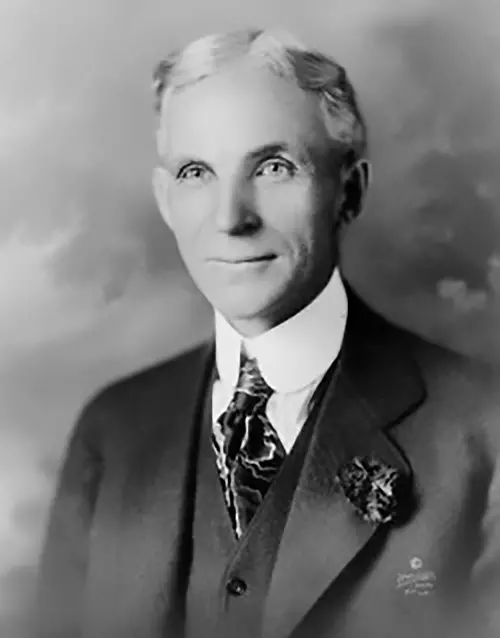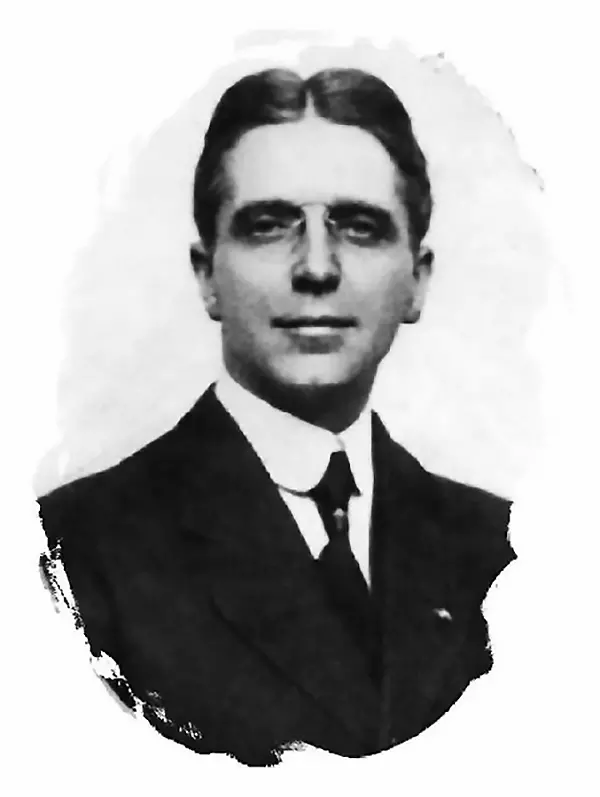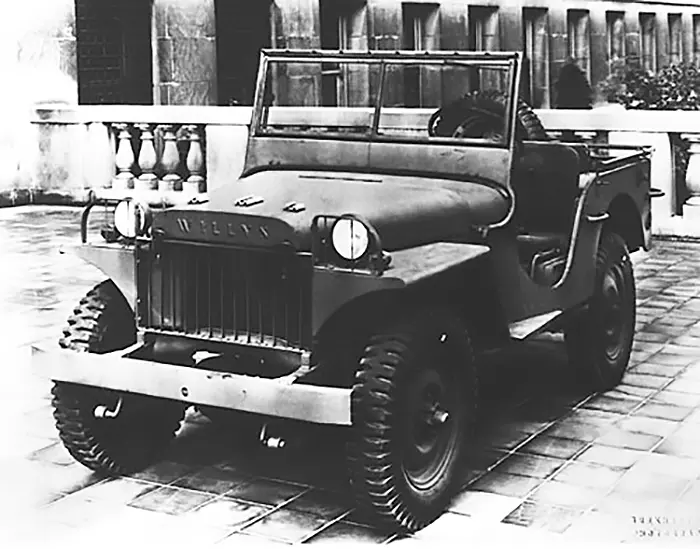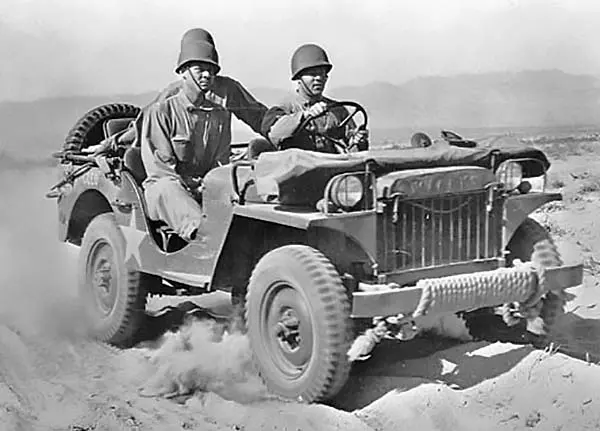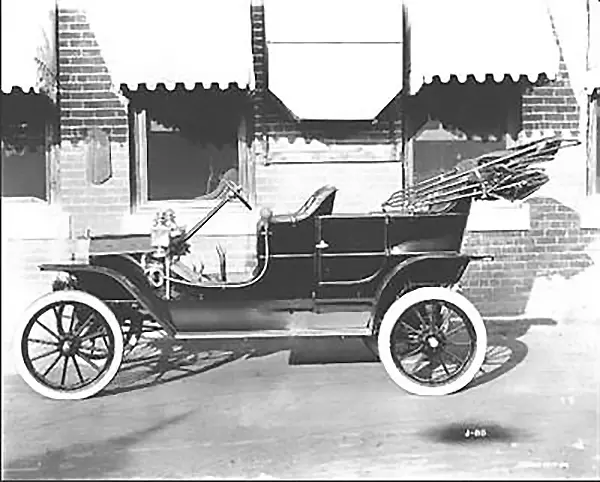 Ford Model T
Ford Model T
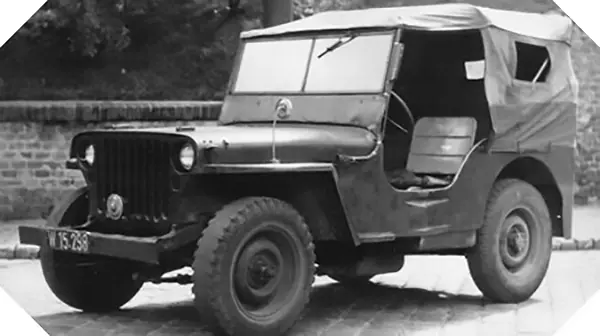 Willys Jeep
Willys Jeep
Exhibit Gallery
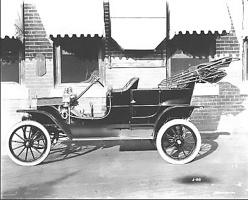
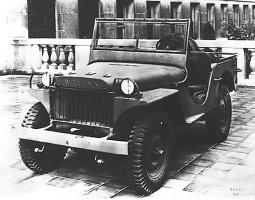
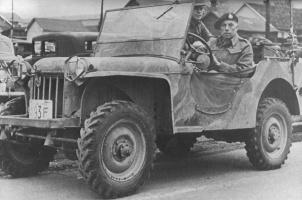
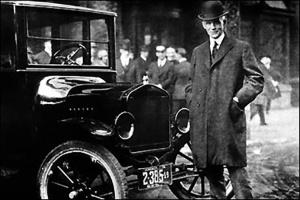
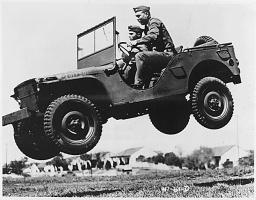
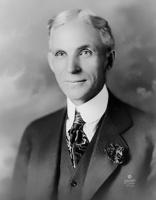
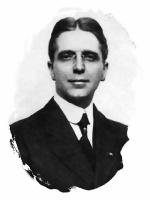
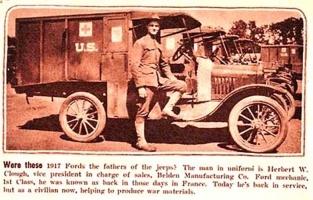
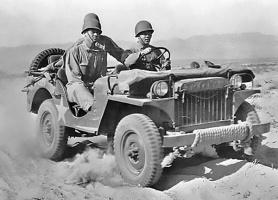
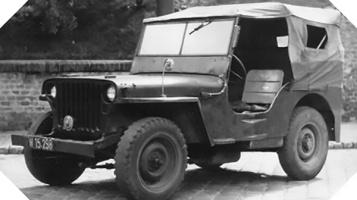
1908 was a pivotal year in the history of the American automobile. Events such as the introduction of the Model T Ford, the automobile that revolutionized the manufacture of the automobile and most mass marketed goods
The Model T affected all forms of industry and life in the United States. Due to the low cost of the vehicle, Americans were now introduced to a new found social and economic mobility that they had never known before. American industry was introduced to the assembly line, a revolutionary method of assembling vehicles that now had the vehicle shuttled from worker to worker, not the worker shuttling around to each vehicle. This system, based upon the "de-assembly" lines of the Union Stockyards of Chicago, speed up manufacturing, lowered costs of production and purchase, and drastically increased sales in all forms of commerce.
In Toledo, Ohio, the affect of the Model T was also being felt. In 1908, a young entrepreneur John North Willys, decided to bring his newly purchased Overland company to Toledo. This company, which would become Willys, would compete with Ford for the next half a century, staving off bankruptcy, hostile takeover, and the Great Depression before finally being sold to Kaiser in the 1950's.
1908 was also an important year in the automobile industry of Toledo, Ohio. It was in 1908 that John North Willys, a former automobile salesman, brought his automobile company to Toledo and renamed it Willys-Overland.
2008 will mark the 100th Anniversary of these three important events in the history of the automobile and the city of Toledo, Ohio.
This exhibit will focus on the relationship between one of the most well known automobile company's in the world and the company that yearned for its successes throughout its short and turbulent history.
Henry Ford and the Introduction of the Model T
"...I will build a motor car for the great multitude...constructed of the best materials, by the best men to be hired, after the simplest designs that modern engineering can devise...so low that no man making a good salary will be unable to own one." (Henry Ford)
Contrary to popular belief, Henry J. Ford did not invent the automobile or the assembly line. Ford simply combined the two to create the "motorcar for the great multitude" that he had longed to create.
Unlike most industrialist of the era, Ford was not independently wealthy. In fact, prior to turning 40, Ford had not had much success during in his early years. Fresh from the ashes of the failing Detroit Automobile Company, Ford was known more as racer than entrepreneur. It would be through racing that Henry Ford would be able to prove to his critics the reliability and superiority of his vehicles. With Toledo native Barney Oldfield at the wheel of Ford's "999," Ford created at commercial version of his race vehicle and, with the capital from 10 investors, started the Ford Motor Company in June of 1903.
After a bitter legal fight with George Selden, the owner of a patent on the "road engine," Ford entered 1908 as one of the four largest automakers in the United States in both profit and sales. This would drastically change on March 18, 1908, with the introduction of the innovative Model T.
Ford and his designers had begun work on the Model T more than two years before it was introduced. The group used the lessons that they had taken from previous models, such as the Model N, as well as lessons learned from other automakers. Ford was very interested in the French automakers' use of vanadium alloy steel, a composite material that allowed the Model T to have twice the strength of normal steel with half the weight.
In addition to the innovative design features, the Model T was also known for the assembly line that it was built on. Although the first vehicles were built according to traditional building principles, the high volume required an innovative solution to auto building. Ford and his engineers introduced the first assembly line in which the product, in this case the automobile, was taken from station to station for workers to complete. This allowed Ford to increase productivity.
Ford also backed up the Model T with a record propaganda campaign. Major magazines and newspapers were filled with ads for the new wonder car, automobile dealers trumpeted the qualities and price of the car to the public, and advertisements were mailed out during weekend mail runs. By the fall of 1908, demand for the Model T exceeded the supply as Model T's sold at record paces. Ford also looked to markets outside of the US to sell his new car. Model T's were used in the creation of the Amur River Railroad in Siberia, driven during the Delhi coronation of King George V, raced in Africa and Asia, and was even used by French troops in World War I in Africa (Lewis,42). For as much as Ford wanted his Model T to also be the automobile of choice for the wealthy (President Wilson owned one), it would be the car of the masses and the automobile that would help build the Ford empire.
John North Willys
John North Willys began his professional life selling bicycles in his hometown of Elmira, NY. Willys proved adept at sales and eventually rose to manufacture his own brand of bicycles. The next move for Willys was into the automobile industry and Willys began selling Overland vehicles in Elmira.
By 1907, Willys was selling Overlands faster than the factory could produce them. The company, which was owned by the Standard Wheel Company
Willys MB
The Army spent more than two decades looking at different alternatives for a light, high speed, and flexible military vehicle to serve both on the front lines of battle and in support.
Willys had been working on a vehicle that they believed could serve in this role one year prior to the Army requesting one. One of the provisions in the original military specifications, a 1300 lb weight would prove to be a problem for Willys, with the company instead believing that performance and sturdiness were more important. The idea was supported by both Ward Canaday and Delmar Roos and became the central focus of the designers of the Willys pilot vehicle. Another possible point of contention was in the choice of engine. Ford and Bantam both chose underpowered and equally non-weight compliant engines for this new vehicle. Both the Austin engine in the Bantam and the Ford engine were in line with the weight requirements of the military, but were lacked the power of the heavier Willys engine. The Army would later raise the maximum weight to 2160 lbs, which once again none of the automakers complied with (Wells, 19-21).
The Willys MA beat out vehicles put forth by Ford and Bantam (which ironically were later built for the Russian army) to win the lucrative military project of creating a lightweight, maneuverable, battlefield transportation weapon. The military required a few changes to the original MA, with the new version, the MB, beginning production in late 1941. Ironically, Ford was called in to help production of the MB due to fears from the Army that the single production facility owned by Willys was a possible target for sabotage or bombing.
There were numerous differences between the MA and MB. First and foremost, the grille on the MB actually followed the design of the Ford concept vehicle. Other cosmetic changes included the changing of the headlamps. Mechanical changes included the removal of the vacuum ignition system, the use of a standardized military battery and electrical system, improvements to the tie rods and spring shackles through the use of improved seals, and moving the hand brake to the center of the vehicle so that both the driver and passenger could utilize it (ASME, 3).
The approximately 650,000 Willys MB's built by Ford and Willys would go on to serve in every single theatre in World War II in varied roles, such as: machine gun fire mount, reconnaissance vehicle, ambulance, limousine, ammo bearer, wire layer, pack mule, and even as taxis. General George C. Marshall deemed the Willys MB to be "America's greatest contribution to modern warfare."
The post war period saw the MB converted to civilian use. The newly monikered CJ (Civilian Jeep) was closely based on the MB, with civilian necessities such as a windshield, windshield wipers, tailgate, and civilian bumpers added. The CJ line, which would be constantly tweaked while still retaining its off road prowess, would be in production until Jeep discontinued the model in 1986. In 1991, the American Society of Mechanical Engineers honored the MB by granting it the title of "International Historic Mechanical Engineering Landmark."
Planning and Building the First Jeep
The Army had taken valuable lessons from the more than two decades of trial and error in their pursuit to create a lightweight, quick, military vehicle. These lessons led to the Army drafting a set of minimum specifications for this new vehicle, which were sent out to more than 130 vehicle producers. These specifications were as follows:
1. A driving front axle with 2-speed transfer case including provisions for
disengaging the front axle drive.
2. A body of rectangular design with a folding windshield and 3 bucket seats.
3. Increased engine power (presumably in respect to the Belly-flopper prototype).
4. Means for towing.
5. 30-caliber machine gun mount.
6. Blackout lighting.
7. Oil-bath air cleaner.
8. Hydraulic brakes.
9. Full floating axles.
10. Wheelbase of 80".
11. Maximum height of 40".
12. Maximum weight of 1275 lbs.
13. Approach and departure angles of 45 and 40 degrees, respectively.
14. Must reach 50 mph on hard surface.
15. Special bracing for a pintle hook setup.
16. No aluminum to be used for cylinder head.
17. At least 4 cylinders.
18. 8 of the 70 vehicles made had to be four-wheel-steer.
These specifications returned two bids, one from Willys-Overland and one from Butler, PA. based American Bantam Company, returned to the Army on July 22, 1940. Ford would soon follow with their own version of the vehicle (ASME, 1-2).
The first vehicle produced by Bantam would later come to be known as the "blitz buggy." The first official "Jeep" was was slightly less powerful than the 85 ft/lb of torque requirement given by the Army.
The Impact of Willys and Model T on the Modern Automobile and American Life
The impact of the Model T and it's close competitors such as Willys cannot be accurately quantified (although many will try). In a short time span, the assembly line was perfected for commercial manufacturing, the automobile brought a valuable travel resource to the masses.
Before the Model T and the assembly line designed to create it, the automobile industry built by employees working on a specific task and moving from vehicle to vehicle. This form of production slowed down the process of building automobiles, raised the price of the created vehicles, and made the automobile a toy only for the wealthy.
The idea for the assembly line style of production was derived from, of all places, the meat packing industry. After a visit to the Union Stockyard on the South Side of Chicago, Ford executive William C. Klann brought back the idea of workers remaining stationary while the product was taken from station to station.
These photo exhibits are related to the early history of Ford-Wyllis rivalry and the subsequent years of developing new cars at Willys-Overland.
Ford-willys-Jeep Galleries
Willys-Overland Cars - photos of Willys cars from 1905 through 1920s
Why the Knight Patented Sleeve Valve Engine is Superior - advertizing catalog (1930)
Willys Sixes 97 - Advertising Catalog (1931)
The New Willys motor cars - Willys-Knight with Sleeve-Valve Motor. Advertising Catalog (1931)
New Twin Sleeve Willys-Knight (1932 Model)
Willys 77 (1933): The New Era Car (advertising catalog)
Willys Six 99 - The Six for the New Era - Advertising catalog (1933)
"Jeep at War" (1943) series by James M. Sessions (American painter, 1882-1962) - “Jeep at War” series of advertisements was created by illustrator James M. Sessions. The watercolor paintings shown here were meant to depict the Jeep’s versatility in times of war and peace.
The New Aero Willys - The Aero-Wing, The Aero-Ace (Advertising catalog, 1952-54)
Willys-Overland Cars - photos of Willys cars from 1905 through 1920s
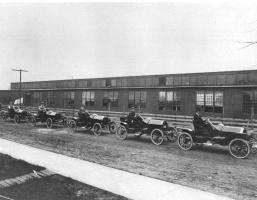
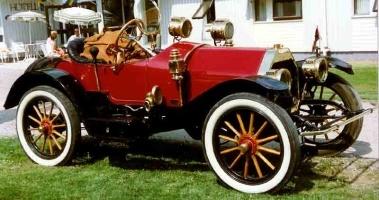
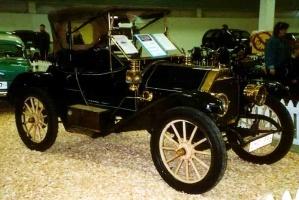
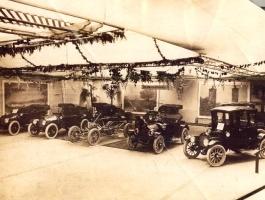
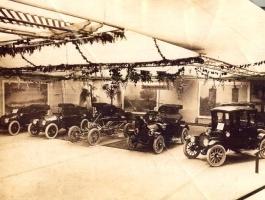
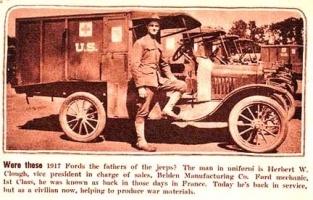
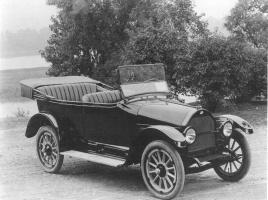
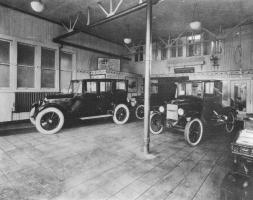
Building the Jeep - photos related to the development of the military Jeep at Ford and Willys, 1908-1940s

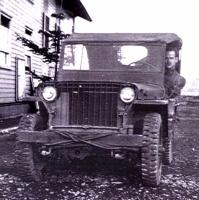
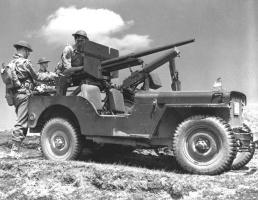
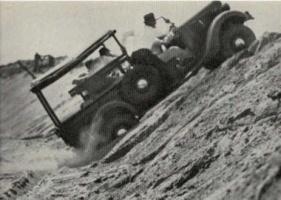

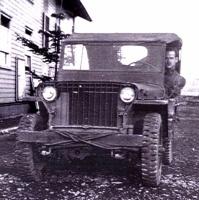
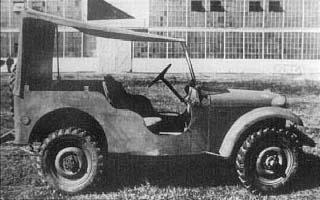
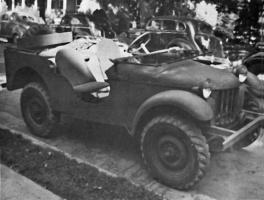




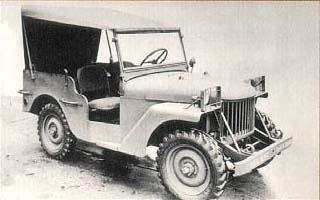


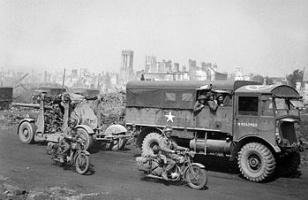
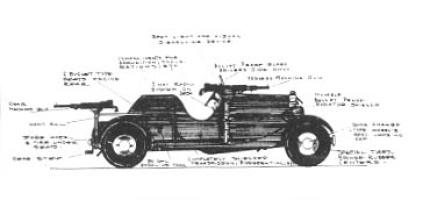
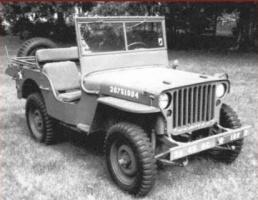
Why the Knight Patented Sleeve Valve Engine is Superior - advertising catalog (1930)
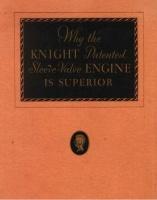
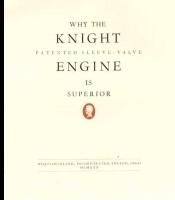
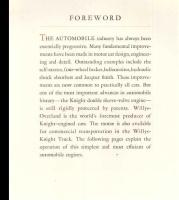
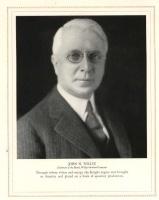
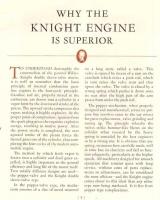
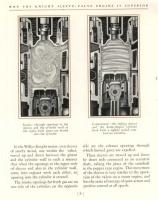
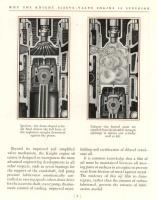
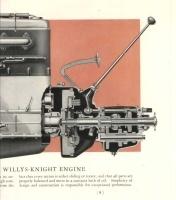
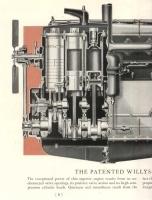
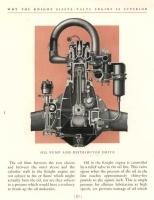
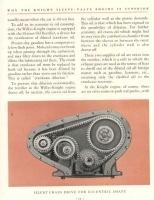
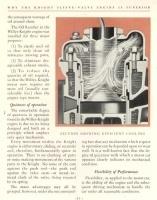
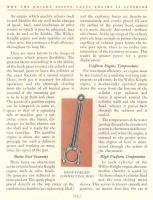
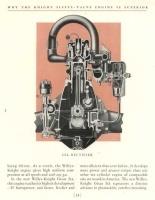
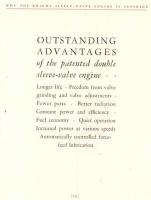
Willys Sixes 97 - Advertising Catalog (1931)
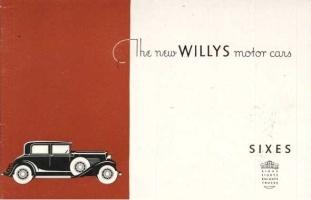
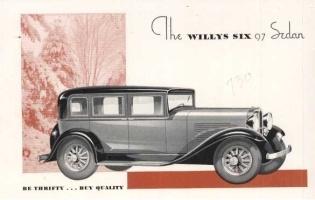
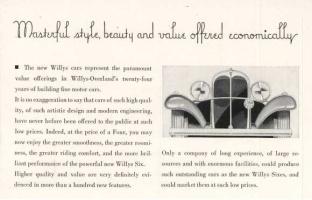
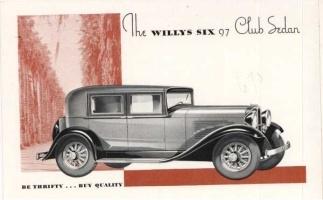
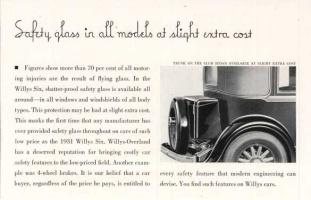
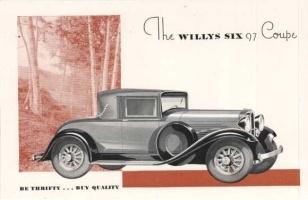
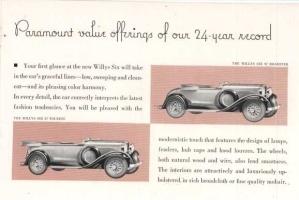
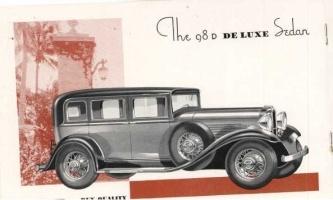
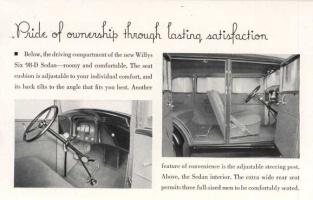
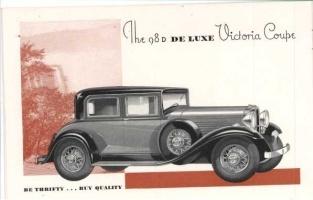
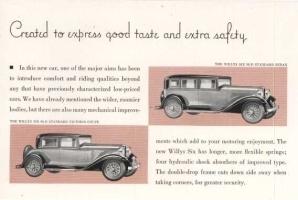
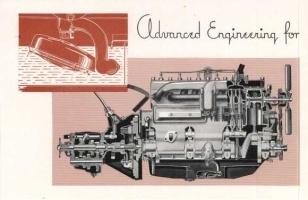
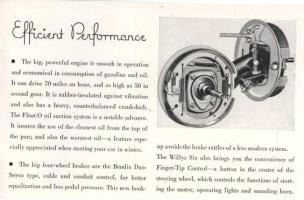
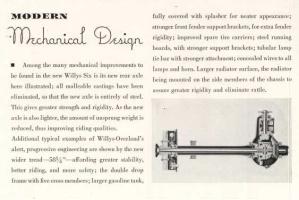
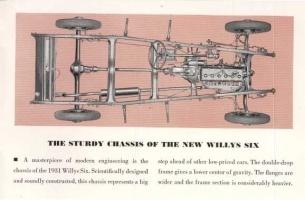
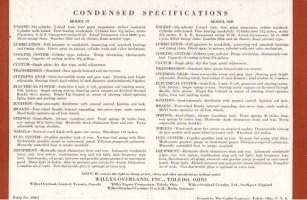
The New Willys motor cars - Willys-Knight with Sleeve-Valve Motor. Advertising Catalog (1931)
New Twin Sleeve Willys-Knight: A Tour through the new Twin Sleeve Willys-Knight (1932 Model)
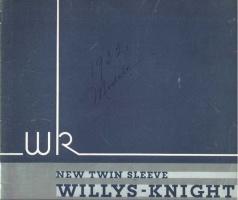
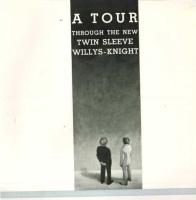
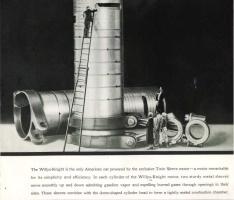
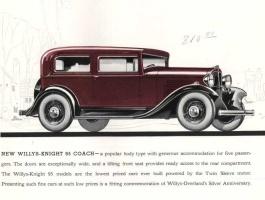
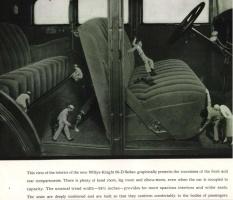
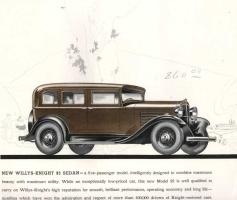
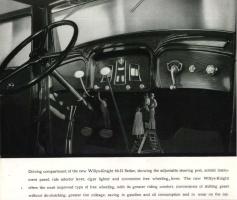
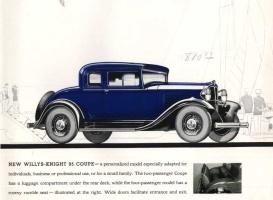
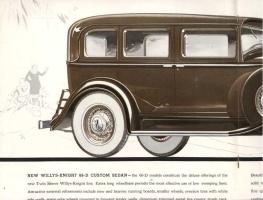
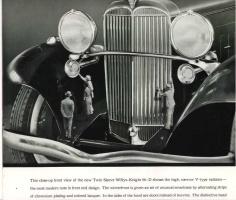
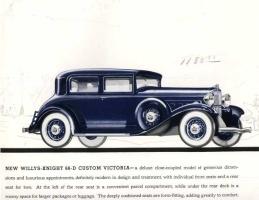
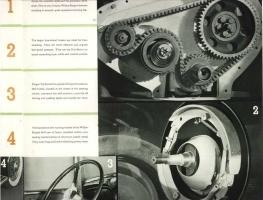
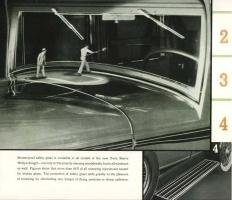
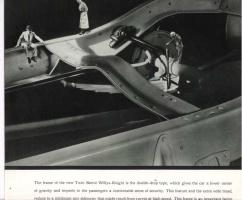
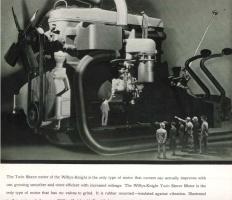
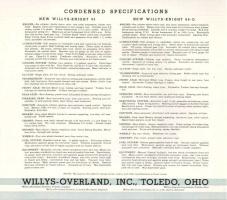
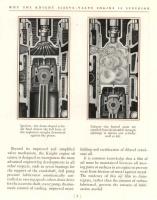
Willys 77 (1933): The New Era Car (advertising catalog)
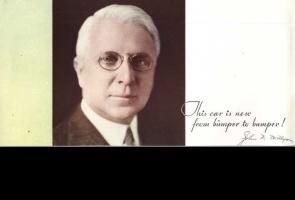
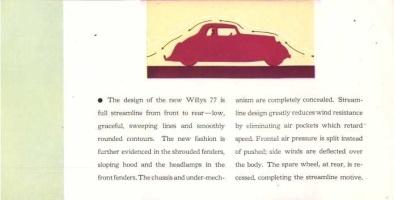
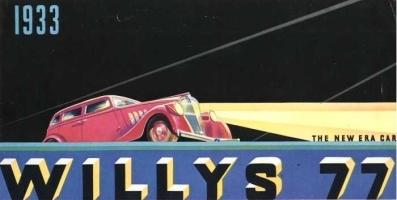
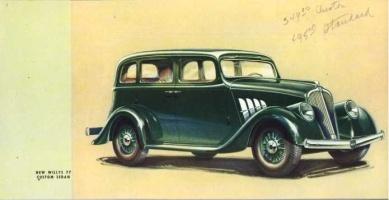
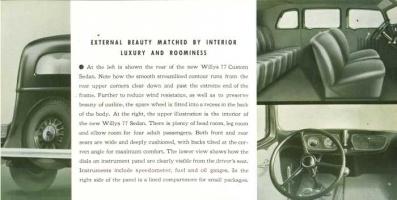
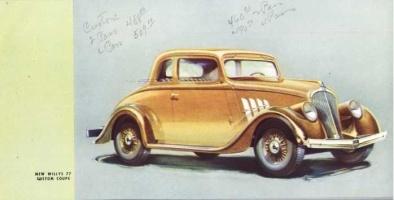
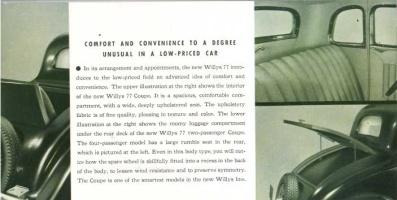
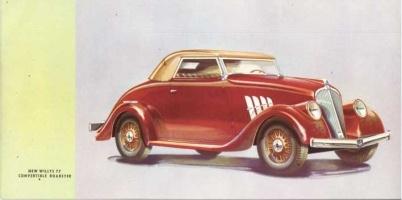
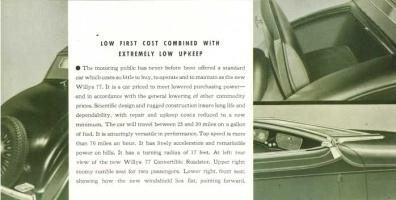
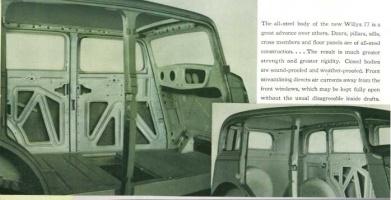
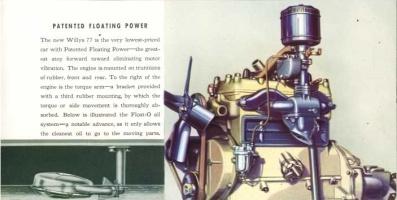
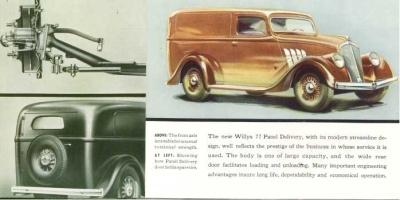
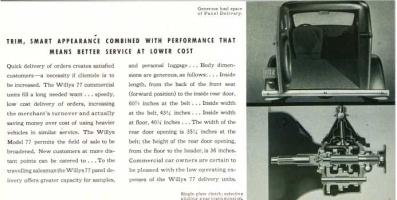
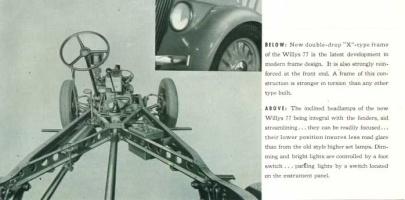
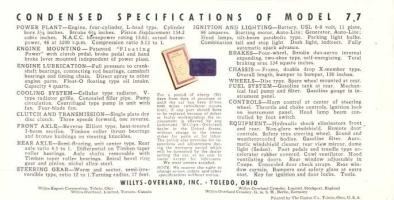
Willys Six 99 - The Six for the New Era - Advertising catalog (1933)
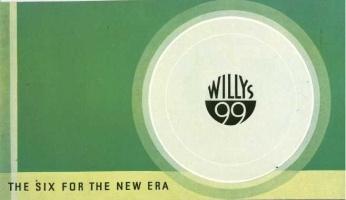
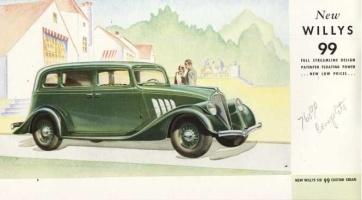
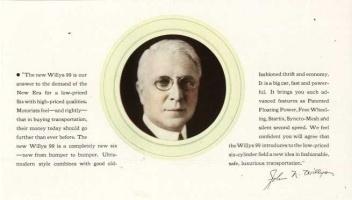
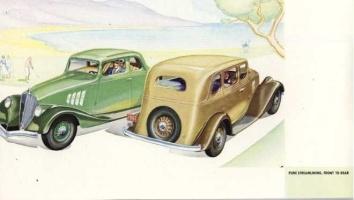
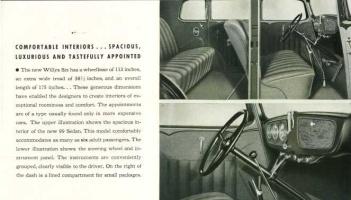
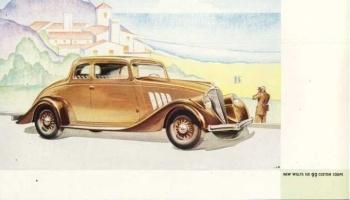
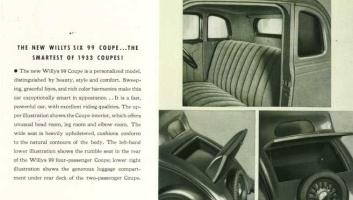
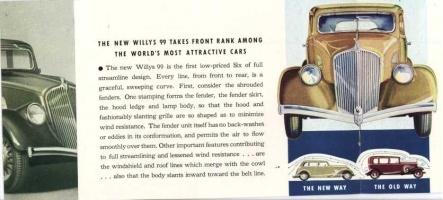
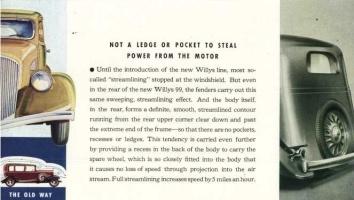
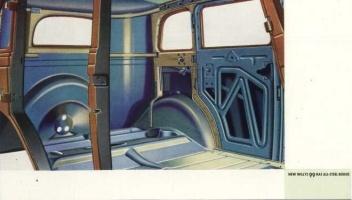
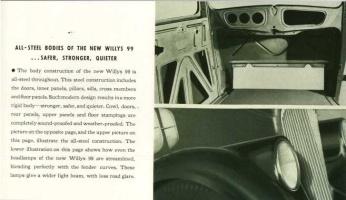
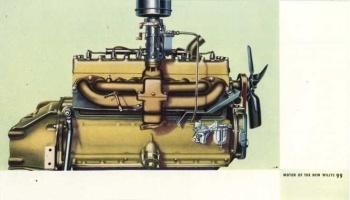
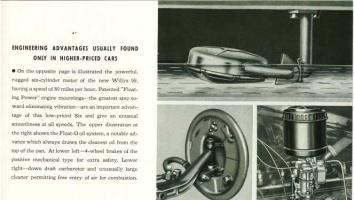
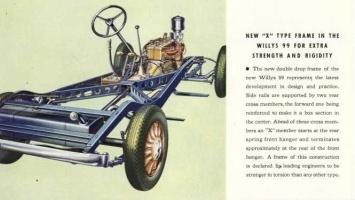
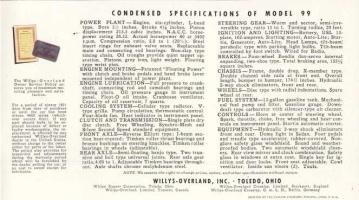
"Jeep at War" (1943) series by James M. Sessions (American painter, 1882-1962)
“Jeep at War” series of advertisements was created by illustrator James M. Sessions. The watercolor paintings shown here were meant to depict the Jeep’s versatility in times of war and peace.
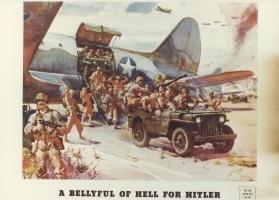
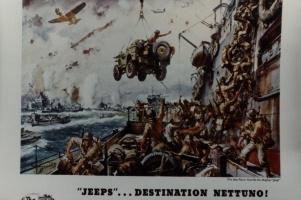
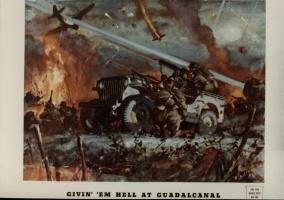
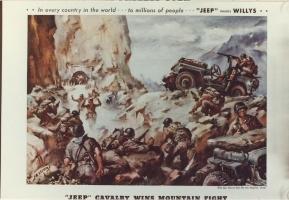
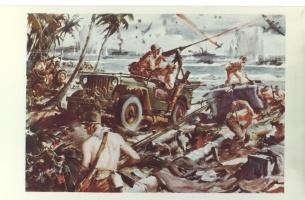
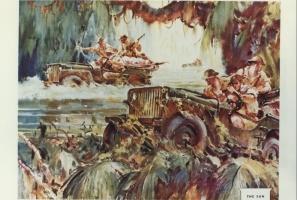
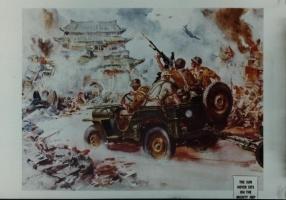
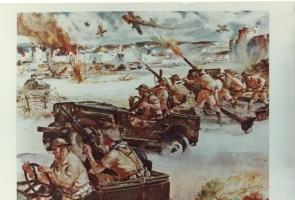
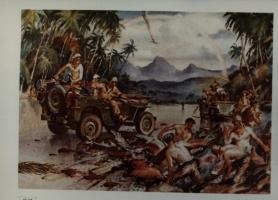
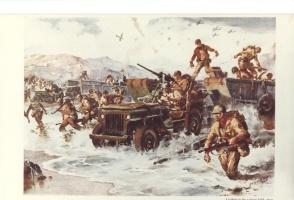
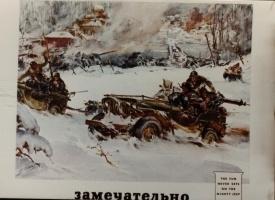
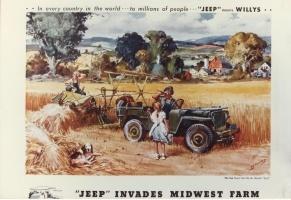
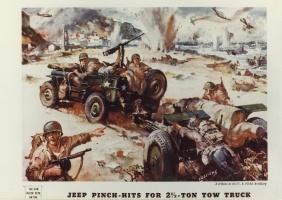
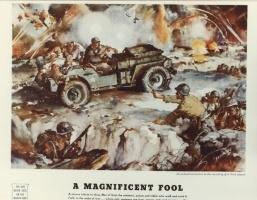
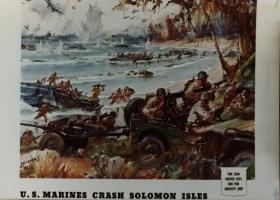
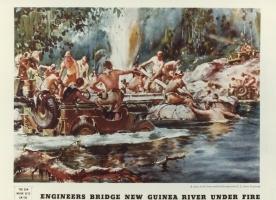
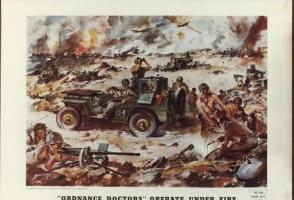
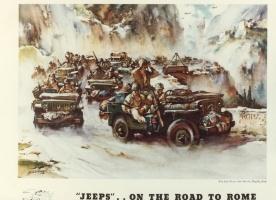
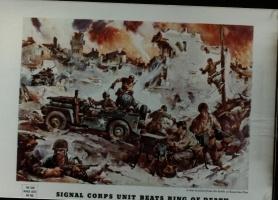
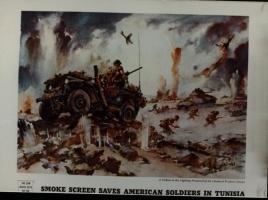
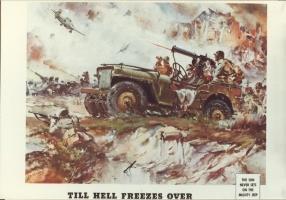
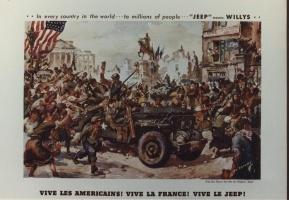
The New Aero Willys - The Aero-Wing, The Aero-Ace (Advertising catalog) 1952-54
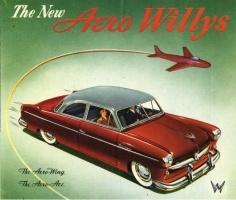
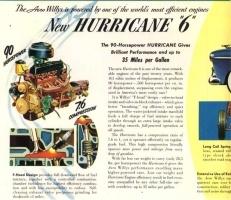
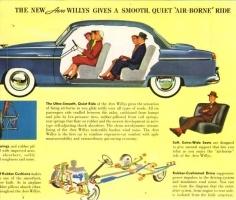
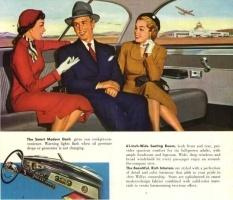
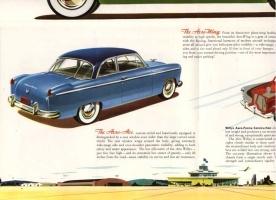
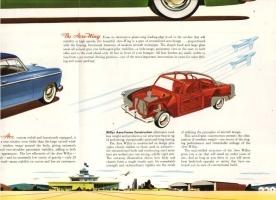
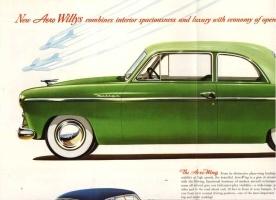
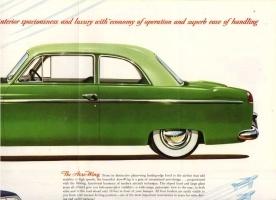
Willys-Overland Factories - selected photos from the Willys-Overland Administration building from opening day in 1916 to demolition in 1979
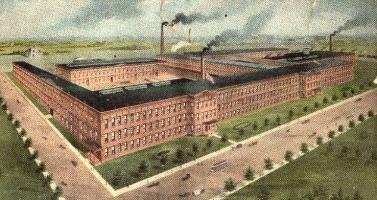
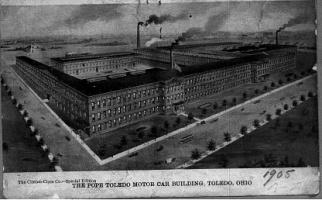
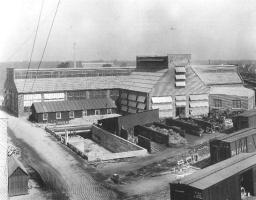
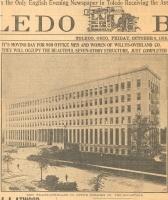
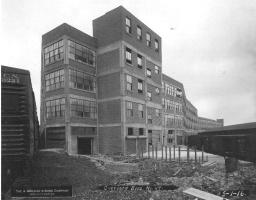
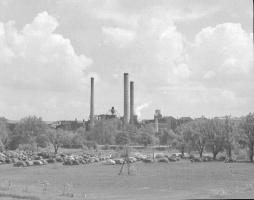
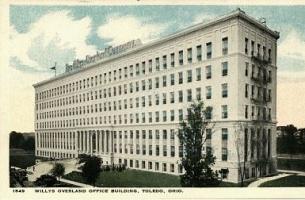
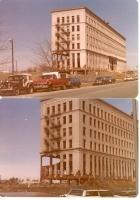
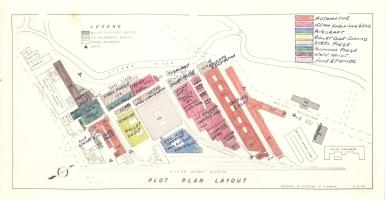
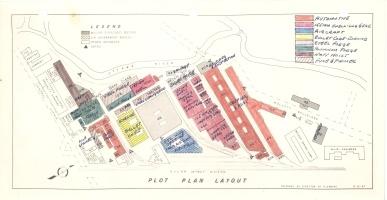
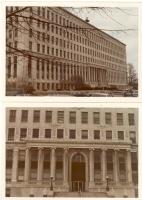
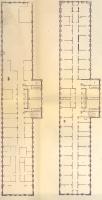
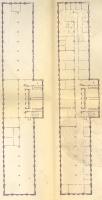
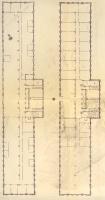

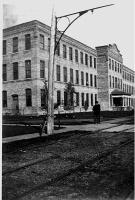
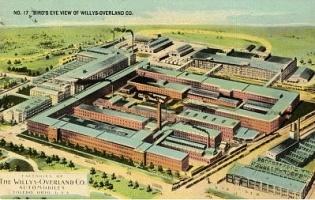
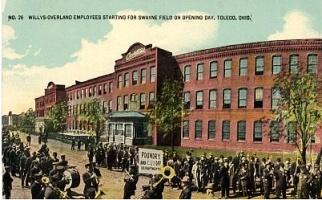
Bibliography
Ford Motor Company
Kay, Jane Holz. Asphalt Nation: How the Automobile Took Over America and How We Can Take it Back. Crown Publishers. New York. 1997.
Lewis, David L. The Public Image of Henry Ford: An American Folk Hero and His Company. Wayne State University Press. Detroit, MI. 1976.
McShane, Clay. Down the Asphalt Path: The Automobile and the American City. Columbia University Press. New York. 1994.
Overland, Willys-Overland, etc.
American Society of Mechanical Engineers. The Jeep MB: An International Historic Mechanical Engineering Landmark, July 23, 1991. American Society of Mechanical Engineers. Toledo, OH. 1991.
Frank H. Canaday Papers, 1911-1976. The Ward M. Canaday Center for Special Collections, University of Toledo Libraries.
Ward M. Canaday Papers, 1902-1991. The Ward M. Canaday Center for Special Collections, University of Toledo Libraries.
Wells, A. Wade. Hail to the Jeep: A Factual and Pictorial History of the Jeep. Harper and Brothers. New York. 1946.
Willys-Overland Company. Proceedings From the Second Annual Convention of Factory Representatives, May 26-29, 1913. Willys-Overland Company. 1913.
Miscellaneous
Chandler, Harry. Metallurgy for the Non-Metallurgist. ASM International Press. Materials Park, OH. 1998.

